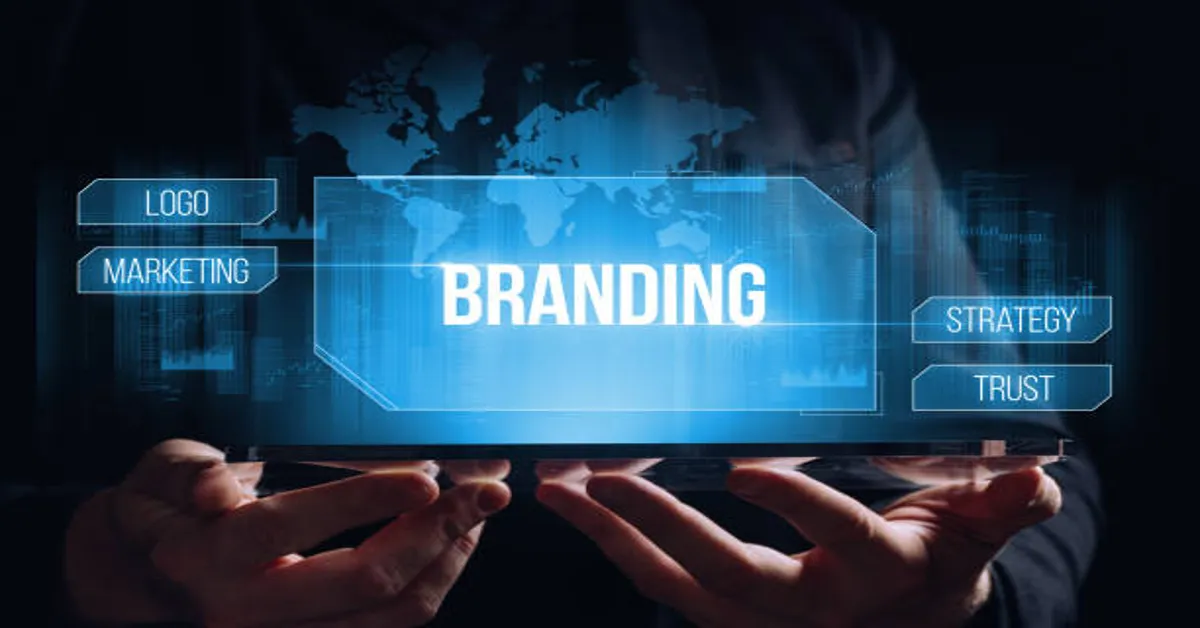Branding has always been one of the most powerful levers in business success. A brand is not just a name, logo, or tagline—it is the total experience customers associate with a company. It is how people perceive a product, service, or organization, and it plays a crucial role in driving trust, loyalty, and long-term growth. Traditionally, branding was an entirely human-driven effort that required creative brainstorming, design teams, advertising agencies, and countless hours of manual execution. However, the digital age has fundamentally reshaped this process. With the rise of artificial intelligence (AI), machine learning (ML), and data-driven platforms, branding is now entering a new era—automated branding.
Automated branding is the practice of using technology, artificial intelligence, and automation tools to create, manage, and optimize brand identity and marketing efforts with minimal manual intervention. It leverages automation software to handle repetitive tasks such as logo generation, social media posting, content personalization, customer engagement, and even real-time reputation management. This new frontier in marketing does not replace human creativity but amplifies it by offering speed, scale, and precision that human effort alone cannot match.
In this detailed article, we will explore automated branding in depth, discussing its meaning, importance, tools, benefits, challenges, strategies, and future outlook.
Understanding Automated Branding
To understand automated branding, we need to examine its three major dimensions: technology, strategy, and psychology.
- Technology – Automated branding depends on advanced software solutions, algorithms, and AI models that can process massive datasets, identify customer behavior patterns, and make real-time decisions. For example, automated design platforms can generate multiple versions of logos and promotional graphics based on pre-fed inputs, while marketing automation systems can schedule and send personalized emails to thousands of recipients in seconds.
- Strategy – Branding is not just about visuals. It is about positioning a company in the market and creating a distinctive voice. Automated branding strategies use machine learning insights to craft consistent messaging across different channels, ensuring the brand tone remains uniform whether it’s a Twitter post, a website ad, or a chatbot conversation.
- Psychology – At its heart, branding is about human connection. Automation can analyze psychological triggers such as colors, words, and interaction patterns to personalize brand experiences that align with customer expectations, thereby deepening trust and emotional attachment.
Together, these elements redefine how companies build and maintain their brand in a fast-paced digital marketplace.
The Core Components of Automated Branding
Automated branding can be broken down into several core components. Each of these represents a function where automation and branding converge:
| Component | Function in Automated Branding |
|---|---|
| Logo & Visual Identity | AI-powered tools generate logos, templates, and brand kits tailored to business needs. |
| Content Creation | Automated systems create blogs, captions, ad copy, or even video scripts based on brand tone. |
| Social Media Automation | Scheduling, publishing, and analyzing posts across multiple platforms without manual oversight. |
| Email Marketing | Automated personalization of email campaigns based on customer data and behavior. |
| Customer Interaction | Chatbots, voice assistants, and virtual agents engage with customers in real time. |
| Analytics & Insights | Continuous monitoring of customer behavior and feedback to refine brand strategy. |
| Reputation Management | AI systems detect brand mentions, monitor sentiment, and suggest responses to protect image. |
| Advertising Automation | Programmatic ad buying optimizes placements and targeting for maximum reach and conversion. |
These components show how diverse and wide-reaching automated branding can be. It goes far beyond design, extending to every customer touchpoint.
Benefits of Automated Branding
Automated branding provides numerous benefits for businesses of all sizes. While large corporations use it to maintain consistency across global markets, small businesses leverage it to access professional-level branding without large budgets. The key benefits include:
1. Efficiency and Time Savings
Automation reduces repetitive manual tasks. A process like generating multiple logo variations or scheduling weeks of social media content can be done in minutes instead of hours. This frees human teams to focus on strategy and creativity.
2. Consistency Across Channels
One of the biggest challenges in branding is maintaining a consistent tone and style across platforms. Automated branding ensures that messaging, visuals, and interactions align with predefined brand guidelines.
3. Scalability
As businesses grow, the number of brand interactions multiplies. Automated branding allows companies to scale without compromising quality, whether it’s engaging with thousands of customers or managing dozens of campaigns simultaneously.
4. Personalization
Automation tools use customer data to deliver personalized experiences. For example, an email marketing system can send different subject lines, product recommendations, or offers to different users based on their behavior.
5. Data-Driven Decisions
Automated branding systems continuously collect and analyze data, offering insights that help businesses make better decisions about messaging, campaigns, and customer engagement.
6. Cost-Effectiveness
While automation requires initial investment in tools, it significantly lowers long-term costs by reducing manpower needs and minimizing errors.
How Automated Branding Works in Practice
To understand automated branding more clearly, consider how it applies in different scenarios:
- Logo Creation: A startup enters details such as business name, industry, and preferred color palette into an AI design tool. The system instantly generates multiple logo options, each aligned with modern design principles.
- Social Media Campaigns: A brand schedules a month’s worth of posts using automation software. The system optimizes post timing for audience engagement and even suggests hashtags based on trending topics.
- Customer Service: An e-commerce store uses chatbots integrated with AI to answer frequently asked questions, track orders, and resolve complaints, ensuring round-the-clock brand presence.
- Email Marketing: Automated systems segment customers based on purchase history. Each group receives tailored messages designed to resonate with their interests, improving open and conversion rates.
- Ad Placement: Automated bidding systems decide in real-time where to place ads online, ensuring maximum visibility at the lowest cost per impression.
Challenges and Limitations of Automated Branding
Despite its potential, automated branding is not without challenges.
- Over-Reliance on Automation – Brands risk losing authenticity if automation completely replaces human creativity. Customers can often detect overly robotic communication.
- Data Privacy Concerns – Automated systems depend heavily on customer data. Mishandling or misuse can lead to breaches of trust and legal consequences.
- Lack of Emotional Intelligence – While AI can analyze patterns, it struggles to fully grasp complex emotions, cultural sensitivities, or nuanced humor.
- High Initial Investment – For small businesses, the cost of implementing automated branding solutions can be intimidating, even if long-term benefits are significant.
- Continuous Monitoring Required – Automation cannot be left unchecked. Businesses must oversee systems to ensure they remain aligned with brand values and customer needs.
Strategies for Effective Automated Branding
To maximize the potential of automated branding, businesses should adopt well-defined strategies:
- Blend Human Creativity with AI Power: Use automation for repetitive tasks while retaining human oversight for storytelling and strategic decisions.
- Maintain Strong Brand Guidelines: Ensure automated systems have clear rules for tone, style, and messaging to avoid inconsistencies.
- Prioritize Personalization: Make full use of customer data to tailor interactions without crossing into intrusiveness.
- Invest in Continuous Learning: Automated branding tools should be updated regularly to align with new technologies, trends, and consumer behaviors.
- Monitor Brand Sentiment: Use AI to track how people feel about your brand in real time and adjust strategy accordingly.
Future of Automated Branding
The future of branding is inseparable from automation. With advancements in AI, natural language processing, augmented reality, and virtual reality, brands will soon offer hyper-personalized, immersive experiences. For instance, customers could interact with virtual brand ambassadors in the metaverse, or AI-generated content could seamlessly adapt brand messages to cultural nuances in different countries.
Moreover, automation will increasingly democratize branding, making professional-level branding accessible to small businesses, freelancers, and individuals who previously lacked resources. The fusion of human creativity and AI-driven automation will create a branding ecosystem that is faster, smarter, and more customer-centric than ever before.
ALSO READ: PLG Supplies: A Complete Guide for Businesses and Buyers
Frequently Asked Questions (FAQs)
1. What is automated branding?
Automated branding is the use of AI and automation tools to manage brand identity, communication, and marketing processes with minimal manual effort, ensuring efficiency, consistency, and scalability.
2. How does automated branding benefit small businesses?
It helps small businesses create professional branding, manage social media, personalize campaigns, and engage customers effectively without requiring large budgets or teams.
3. Can automated branding replace human creativity?
No. While automation handles repetitive tasks and data-driven decisions, human creativity remains essential for storytelling, emotional connection, and strategy.
4. What are the risks of automated branding?
Risks include loss of authenticity, over-reliance on automation, data privacy issues, and the potential lack of emotional intelligence in customer interactions.
5. What is the future of automated branding?
The future lies in hyper-personalized, immersive brand experiences powered by AI, AR, and VR, making branding faster, smarter, and more accessible.









